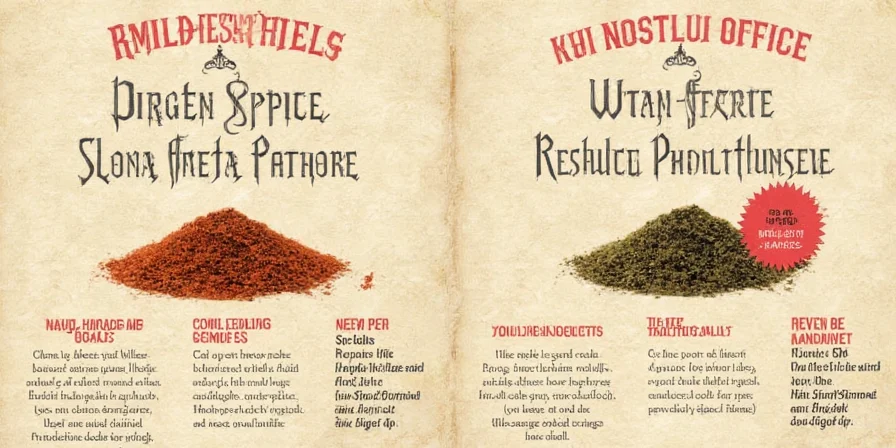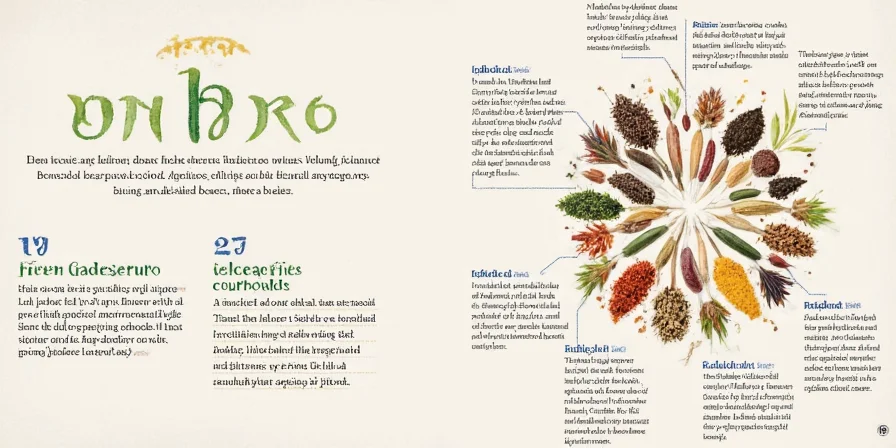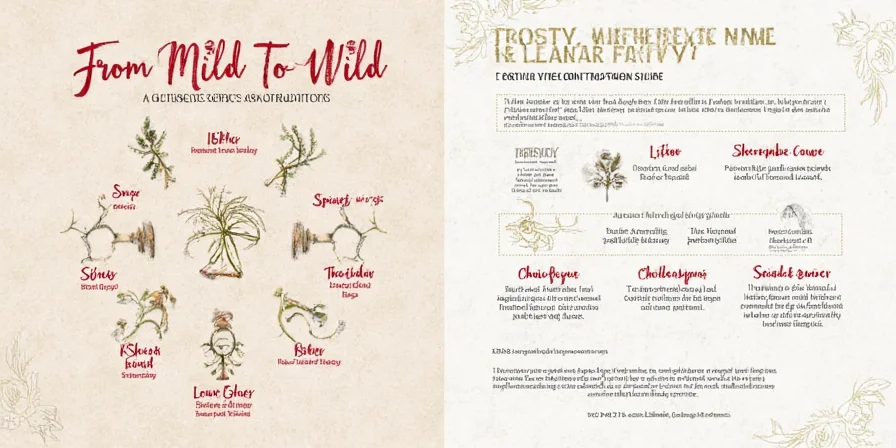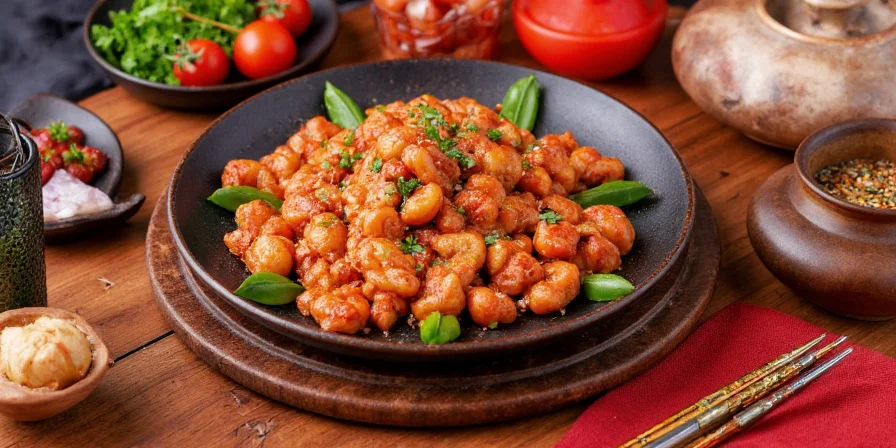Introduction: The Fire Behind the Flavor
This guide delivers actionable spice mastery for home cooks seeking authentic Thai flavors. You'll learn to confidently navigate heat levels, avoid common pitfalls, and create balanced dishes that honor Thailand's culinary traditions—without relying on restaurant shortcuts.
Table of Contents
- The Thai Spice Scale: Understanding the Heat
- Essential Spices and Ingredients in Thai Cuisine
- Sizzling Thai Dishes You Must Try at Least Once
- How to Adjust Spice Levels Like a Pro
- Pro Tips: From Prep to Plate
- Spice Culture Across Thailand: Regional Variations
- Conclusion: Embrace the Burn, Respect the Balance
- Frequently Asked Questions
The Thai Spice Scale: Understanding the Heat
Thai spice measurement prioritizes sensory experience over numerical values. This revised scale reflects actual street food vendor practices and ingredient realities:
| Thai Term | English Meaning | Description | Real-World Context |
|---|---|---|---|
| Mai Pet | No spice | Rare in Thailand; typically modified for tourists | Uses sweet basil instead of chilies |
| Pet Noy | Little spice | Child-friendly version at family restaurants | 1/4 bird's eye chili per serving |
| Pet | Medium spice | Standard street food baseline | 1-2 whole bird's eye chilies |
| Pet Mak | Very spicy | Local eateries' default for adults | 3-4 chilies with seeds included |
| Pet Khot | Super spicy | Test of resilience in Northeast Thailand | 5+ chilies with fermented shrimp paste |

Essential Spices and Ingredients in Thai Cuisine
True Thai flavor requires understanding ingredient roles beyond heat generation. Critical distinctions include:
- Bird's Eye Chili (Prik Kee Noo): Adds sharp, immediate heat. Regional variants differ: Central Thai chilies are fruitier, while Isaan varieties burn longer.
- Lemongrass: Must be bruised, not minced, to release oils without bitterness.
- Kaffir Lime Leaves: Only the central vein is used; outer leaves taste medicinal.
- Galangal: Never substituted with ginger—it creates entirely different flavor compounds.
- Fish Sauce (Nam Pla): Quality varies by fermentation time; 18-month aged versions add depth without saltiness.
- Shrimp Paste (Kapi): Must be roasted before use to eliminate raw odor.
- Tamarind Paste: Fresh pulp preferred over blocks for brighter acidity.

Sizzling Thai Dishes You Must Try at Least Once
Authentic experiences require understanding regional expectations:
- Tom Yum Goong: True version uses freshwater shrimp heads for broth—never clear broth. Spice comes from pounding chilies with lemongrass.
- Pad Thai: Street vendors add preserved radish for umami; chili powder is optional condiment, not base ingredient.
- Green Curry: Authentic version uses fresh green chilies, not curry paste from jars. Requires pounding herbs for 10 minutes.
- Som Tum: Northeastern style includes fermented fish sauce (pla ra), creating complex funkiness beyond simple heat.
- Massaman Curry: Persian-influenced dish where spice is background note; cinnamon and cardamom should dominate.

How to Adjust Spice Levels Like a Pro
Effective heat management requires understanding chili chemistry:
- Control capsaicin release: Whole chilies in broth add flavor without overwhelming heat; sliced chilies release more burn.
- Neutralize strategically: Coconut milk works best when added before chilies. Sugar must be palm sugar—white sugar creates cloying sweetness.
- Counteract after consumption: Rice neutralizes capsaicin better than dairy. Avoid water—it spreads heat.
- Preserve freshness: Add chilies in final cooking minute to maintain bright heat; prolonged cooking creates bitter notes.
- Build tolerance: Regular small exposures reset pain receptors. Never force extreme levels—Thai culture respects personal limits.

Pro Tips: From Prep to Plate
Professional results depend on technique precision:
- Curry paste texture: Mortar-and-pestle grinding creates emulsion impossible in blenders. Stop when paste leaves oily ring in mortar.
- Wok timing: Pad Thai requires exactly 90 seconds of high-heat stir-frying. Undercooked = soggy; overcooked = rubbery.
- Flavor layering: Balance elements in sequence: sour (tamarind) → salty (fish sauce) → sweet (palm sugar) → spicy (chilies).
- Herb freshness: Tear basil/mint by hand; chopping bruises cells and releases bitter compounds.
- Ingredient sequencing: Always fry curry paste in oil before adding liquids to bloom flavors.

Spice Culture Across Thailand: Regional Variations
Regional differences reflect agricultural and climate realities:
| Region | Signature Dish | Heat Source | Cultural Insight |
|---|---|---|---|
| Central Thailand | Green Curry | Fresh green chilies | Palace cuisine emphasis on balance; heat never dominates |
| Isaan (Northeast) | Som Tum | Bird's eye + dried chilies | Heat compensates for scarce protein; fermented ingredients aid digestion |
| North Thailand | Khao Soi | Dried red chilies | Milder due to cooler climate; heat serves preservation purpose |
| South Thailand | Gaeng Tai Pla | Chili oil + fermented fish bile | Intense heat combats humidity; reflects Malay culinary influences |

Conclusion: Embrace the Burn, Respect the Balance
Mastering Thai spice isn't about enduring heat—it's understanding how each element serves the dish. True authenticity comes from respecting regional traditions while adapting to your kitchen. Start with Central Thai 'Pet' level, master flavor balancing, then explore regional variations. Remember: the most respected Thai cooks adjust spice to the diner, never force extreme levels. Your journey to authentic flavors begins with a single chili—and ends with perfect harmony.
Frequently Asked Questions About Thai Spice
Why does my homemade Thai food taste different from restaurants despite using the same ingredients?
Restaurant woks achieve 500°F+ heat impossible in home kitchens. This creates 'wok hei' (breath of the wok)—a charred aroma essential to stir-fries. Solution: Use smallest pan possible, preheat until smoking, and cook in single-ingredient batches.
How can I reduce spice without losing authentic flavor?
Never remove chilies—reduce seeds/membranes. Substitute half the chilies with roasted red bell peppers for similar texture without heat. Add roasted shallots for depth that mimics chili complexity.
What's the most common mistake when adjusting spice levels?
Adding sugar or dairy too early. These should only balance existing flavors—they don't neutralize capsaicin. First remove chili sources, then rebalance the four core flavors (sweet/sour/salty/umami).
Are there health risks to consuming very spicy Thai food regularly?
For most people, moderate spice has benefits. However, consuming 'Pet Khot' levels daily may irritate gastric linings. Always pair with rice and cooling herbs. Consult a doctor if you have ulcers or IBS.
How do I store fresh Thai ingredients properly?
Wrap lemongrass/kaffir lime leaves in damp paper towels inside airtight containers (lasts 2 weeks). Freeze whole bird's eye chilies—thaw before use to preserve texture. Never refrigerate galangal; store at room temperature like ginger.











 浙公网安备
33010002000092号
浙公网安备
33010002000092号 浙B2-20120091-4
浙B2-20120091-4